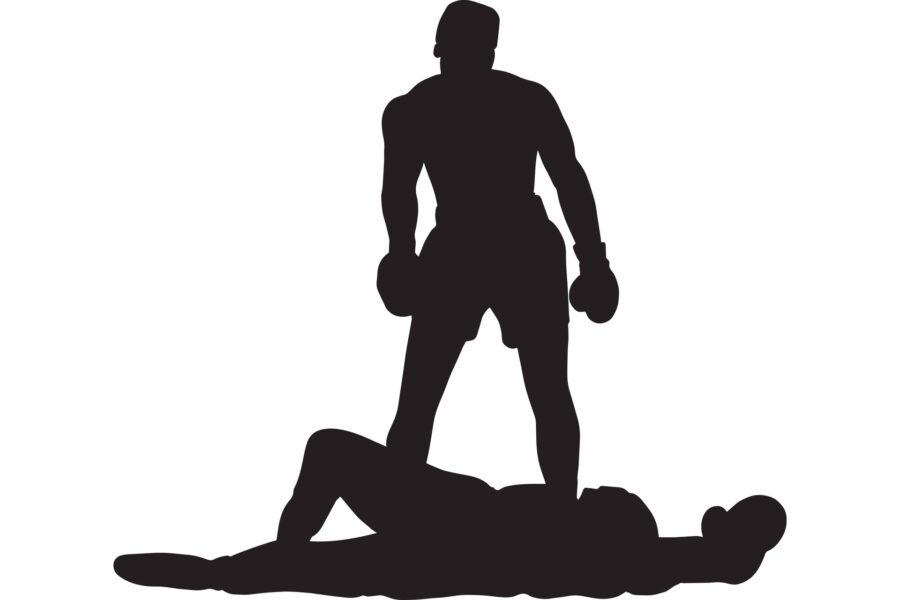Getting Your Mind In the Game
3:59:4
Four numbers that may not mean much to you. But they did to Roger Bannister. Bannister was the first person to run a sub-four-minute mile. This was a barrier that was once thought to be impossible. It had been tried, without success, since the time of the Ancient Romans. People in white suits even claimed that it was beyond the realms of human evolution.
But Roger Bannister had other ideas.
Bannister decided that this ‘impossible’ feat not only could be done but that it would be done – and done by him. And, he was going to break the four-minute barrier by doing the opposite of what everyone else was doing. Bannister ran less mileage, but he did so _far _more intensely. And the rest is history.
Yet, the really interesting thing was what happened after Bannister broke the record. It took only 46 days for his record to be broken. And from there, the record just kept getting smashed. Today, that barrier that was once deemed impossible has been broken by an incredible 16:87 seconds. It now stands at 3:43:13.
The story of Bannister and 3:59:4 is absolutely vital to every guy who has ever walked into a gym and tried to lift a weight. Why? Because it reveals a fundamental truth which prevents the vast majority of people from ever achieving their potential in the gym . . .
Barriers to success are nearly always mental.
People will tell you lots of things to prevent you from making progress. You will hear them talk about the limiting factors of genetic potential, age, that you can’t build muscle and burn fat at the same time, or that there’s no way that _you’ll _ever make it into the 300-pound bench club.
Don’t believe them. Do not allow self-defeating limitations to crowd you into a little box where your capabilities are fixed. Rather, take a lesson from Roger Bannister and reach for a lofty goal. But then break it down into bite-size portions that are attainable. Each of these mini-goals becomes a stepping-stone to your ultimate goal. Bannister didn’t run a sub-4 minute mile. In his head, all he was concerned about was knocking off the quarter-mile in under 30 seconds. And then doing it again. And again. And again.
If you, like Bannister and every successful athlete after him, can break down barriers in your mind, every limitation will cease to exist. Perhaps the most famous athlete of the last 100 years was a master at it. One day a reporter asked Muhammad Ali how many push-ups he could do. Ali’s answer underwhelmed him . . .
About eight or nine.
“What! Just eight or nine?” the reporter retorted.
Ali’s answer was telling . . .
“I only start counting when I can’t do any more.”
Ali knew that fatigue and exhaustion are the points where losers stop. He also knew that fatigue and exhaustion are barriers – they are not stopping points. However, that is the point where 99% of people do stop. For the greatest athlete of the 20th century, however, they were the starting point. Maybe, there’s a lesson in there for us.
When you walk into the gym, see yourself as a warrior. Zone in on your workout so that your mind is transfixed on what you are going to accomplish.
Break down your training into sets and reps and focus exclusively on what you need to accomplish on that next set. Nothing else matters. Be in the moment. Make the mind-muscle connection. Don’t be like most guys whose minds are wandering while they are training – even while they are in the middle of their set. By being in the moment, you are teaching yourself to stay present, focused, and active. This will allow you to push beyond your physical barriers – and into the zone that builds muscle.
German super brain Friedrich Nietzsche once said
. . .
He who has a why to live can bear almost any how
That powerful statement underscores the power of having a goal. Imagine a person digging into the rubble after an earthquake because they hear a child crying. Then think of someone else who has been forced to endlessly dig holes in the ground, then cover them up as punishment. One has a goal, the other is just going through the motions. Yet, turn up at any gym any time and you’ll see the majority of people acting just like that second guy. Their minds are not plugged in. They are just going through the motions. Their bodies are not going to respond. Goal setting, then, is the difference between spinning your wheels and actually achieving something.
Now we’ve all heard about goal setting. Yet, most people don’t really know what one is and how to set meaningful, achievable goals. Hardly any people ever take the vital step of committing their goals to paper. The majority jump into the action without doing the planning. And then they fail. Let’s learn to do it right.
Here’s a workout you should try:
Losing weight is not a goal. Neither is building muscle. They are not specific enough. In fact, losing weight should never be your goal. It doesn’t differentiate between fat and muscle. No one in their right mind wants to lose muscle. Rather than setting hairy-fairy, general goals, get zoned in. Where do you want to build muscle and precisely how (an inch on the biceps, maybe)?
Most people are too afraid to set big goals. They think that they are not worthy of them. Believing that they have zero chance of achieving them, they lower their expectations to avoid setting themselves up for failure. Don’t be like those people. You are now living the only life you’ve got. So dream big. And remember . . .
There are no unrealistic dreams, only unrealistic timelines.
_ _
When it comes to your physical goals, nothing is out of the question. Every single person that you’ve ever seen in a fitness magazine, on a TV show, or the Internet has the same inner structure as you. They’ve all had to start at the same place to achieve their goals. Sure there may be some airbrushing, photo-shopping, even some steroids thrown in the mix, but the bottom line is if you can dream it, you can achieve it.
So go ahead and find one of those pictures - one that truly inspires you. Cut it out, get it laminated, and put it on your message board. That is your ultimate, long-term goal. It may take you 5 years, but that is where you are heading.
Now work backward. Set stepping-stone goals, each of which is taking you a rung of the ladder closer to your ultimate goal. Set a 12-month goal, then 3 months, weekly and daily goals.
12 Month Goal: This should revolve around a body fat percentage and body part measurements. Setting the goal to reduce your body fat percentage by 7-10 points in 12 months is a realistic goal. Every 12 months have photos taken of yourself and compare them with the previous year’s pictures.
3 Month Goal: 3 months is a good amount of time to zero in on achieving a goal. Over that 12 weeks feed on your goal every day. Your goal will primarily be about body fat loss and muscle gain. Write it down as if it has already happened, with an emotion attached:
It is June 30th, 2022 and I am at 14% body fat. It feels great!
_ _
Get this card laminated and carry it with you everywhere. Pull it out and read it a minimum of 7 times each day. Don’t worry if you feel self-conscious at first. This is a vital step to keeping you on track.
Weekly Goal: This goal should revolve around two things; making sure that you get all of your scheduled workouts in for the week and ensuring that you are sticking to your weekly meal timing schedule. Set up a tick chart and physically check these things off as you go. It’s great reinforcement.
Daily Goal: This goal will focus on what is immediately in front of you - your workout and your eating plan for that day. When it comes to your workout you need to have specific goals for each session. Each set of each exercise should have its own rep goal. You’ll also have goals for how much weight to lift. Your overriding objective will be to up the intensity in each succeeding workout and your specific goals will be tailored toward making that happen.
The multi-billion dollar supplement industry has conditioned people to believe that they can lose fat and build muscle very rapidly. You can lose weight fast, but, as we’ve already found out, we don’t want to lose weight. We are interested in losing only fat - and that takes time.
So, forget about those ‘lose 10 pounds in 24 hours’ promises that are flung at you every day and start getting realistic. A sustainable rate of fat loss is between 1 and 2 pounds per week.
Use that as the basis of your goal setting.
Getting emotionally involved with your goal will deeply impress your why into your subconscious. The subconscious is the seat of your unthinking actions - your habits. Every message that filters through to it is accepted without question and acted upon automatically. That is exactly where you want your weight maintenance habits to be because the subconscious always expresses itself in physical form - positive behaviors that will reinforce your goal.
So, don’t just focus on the fact that you want 19inch arms – why do you want 19-inch arms? Focus on that reason, whether it is to impress the hotties at the beach, or to prove something to your father, and use it to fuel your focus.
- Don’t allow barriers to prevent you from reaching your potential
- When your body says stop, is when your mind must say go
- Break down your goals into achievable parts
- Focus like a laser beam on what s immediately in front of you
- Use the power of goal setting to supercharge your workouts
- Focus on the emotional driver behind your goal


